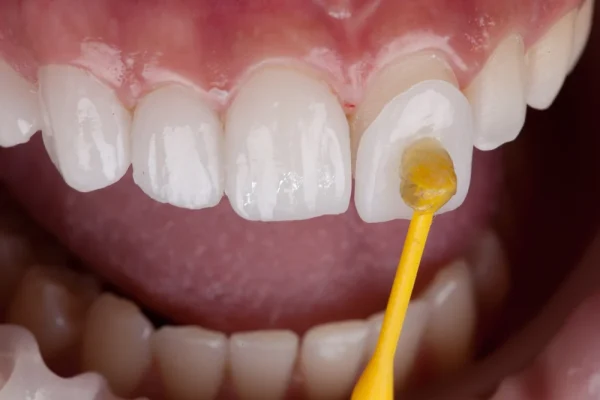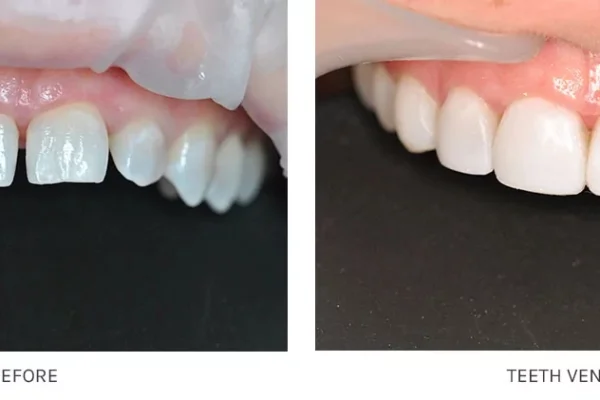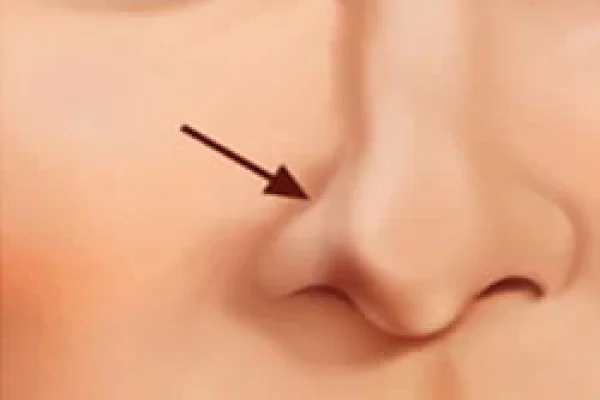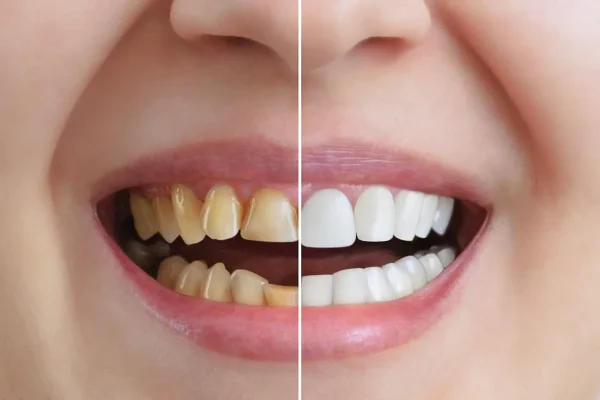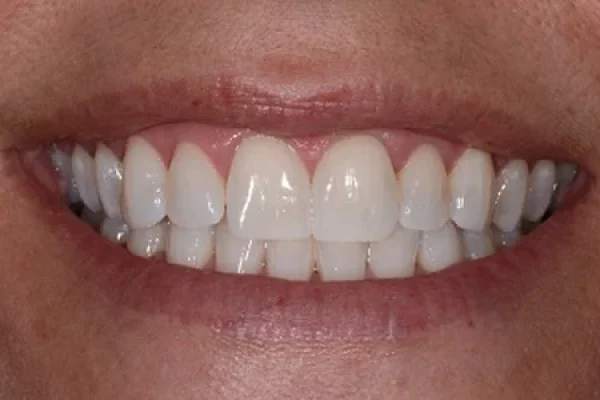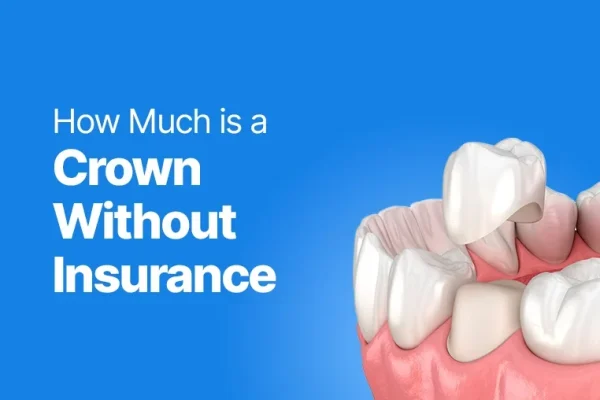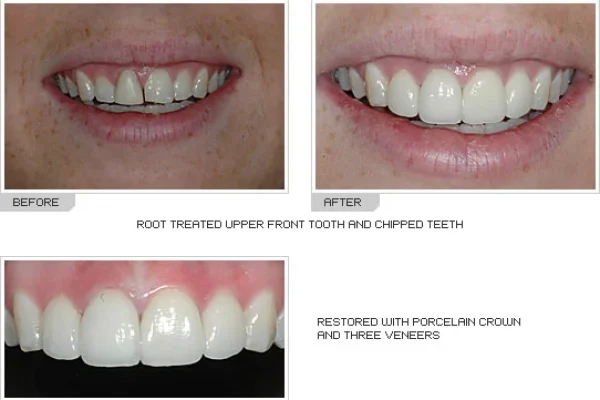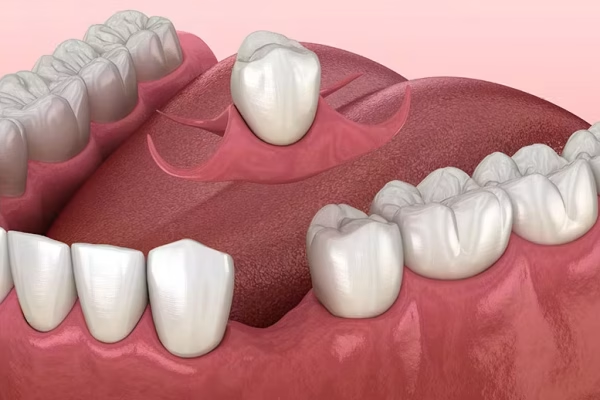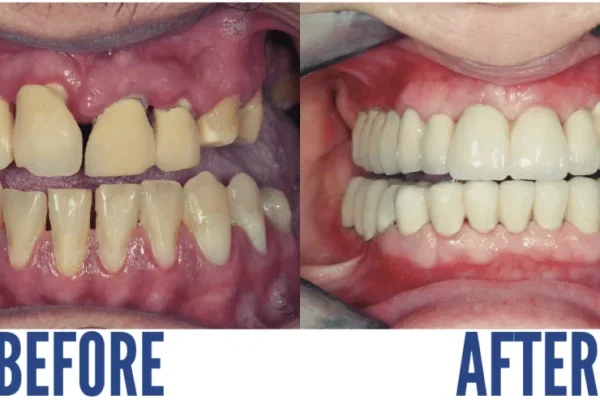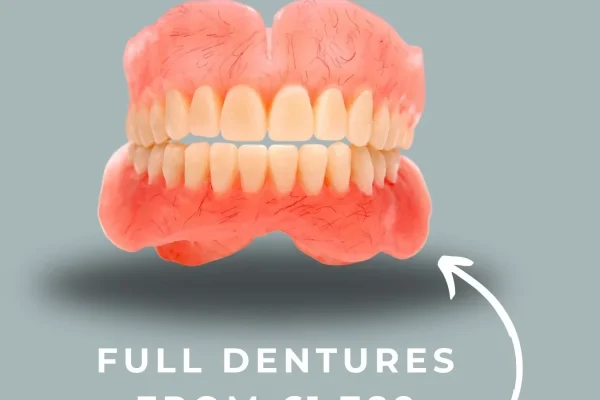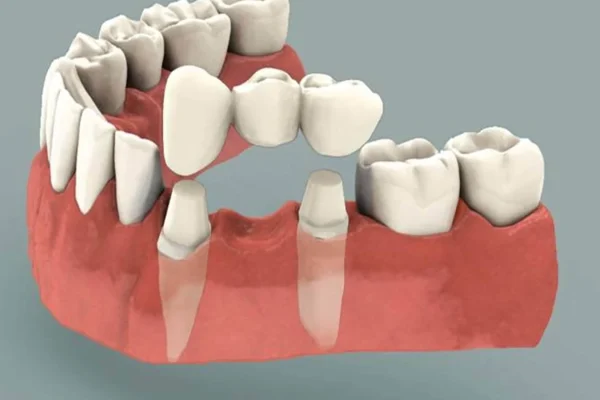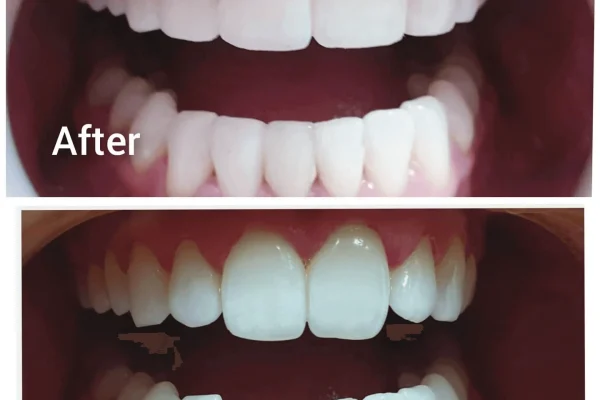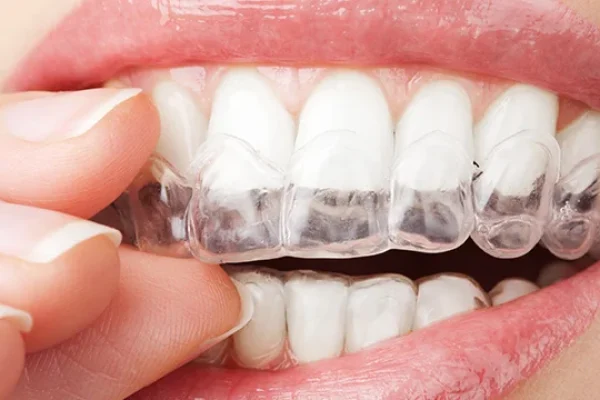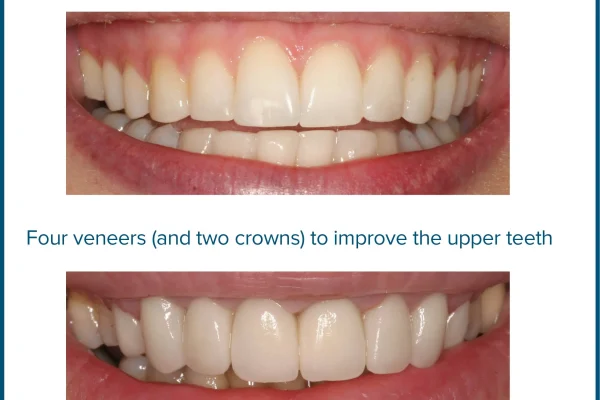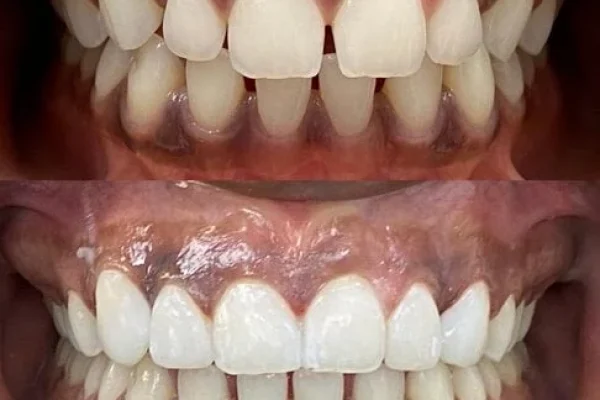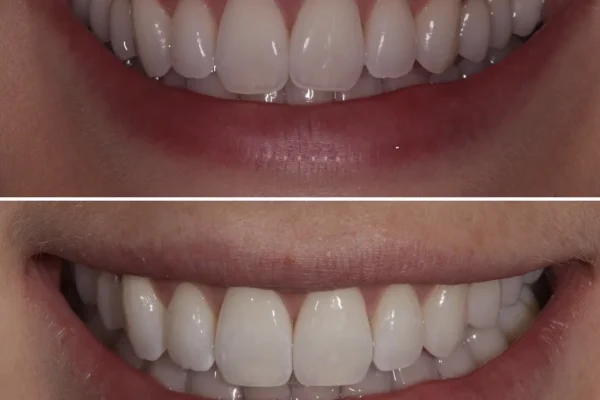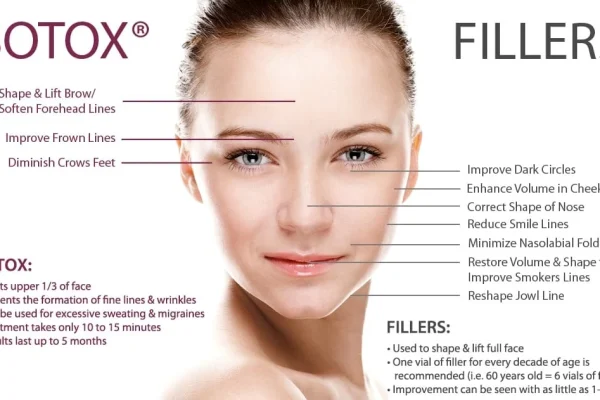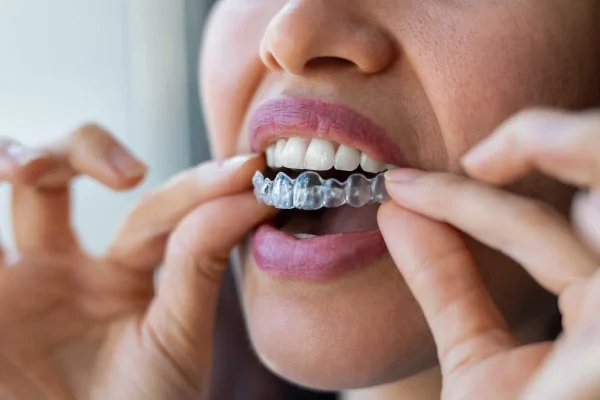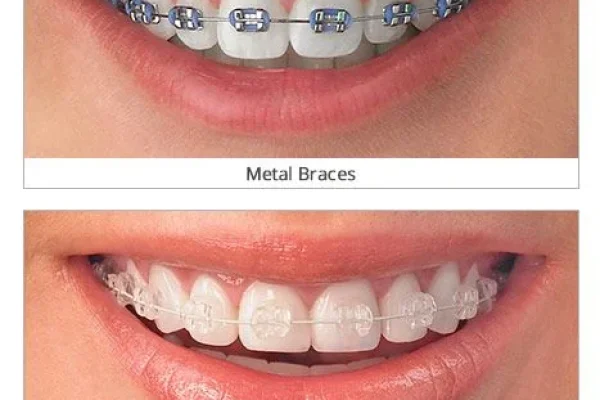
Table of Contents
ToggleKey Takeaways
-
- Dental crowns are custom coverings that restore a damaged tooth’s shape, size, strength, and appearance.
-
- Common types include Porcelain Fused to Metal (PFM), All-Ceramic/All-Porcelain (like E-Max), Zirconia, Full Metal, and Resin (temporary).
-
- Cost varies significantly based on material, complexity, and location, with Resin being cheapest (temporary) and premium Ceramics/Zirconia or Gold being most expensive.
-
- Full Metal and Monolithic Zirconia are generally the strongest types, ideal for back teeth under heavy chewing forces.
-
- All-Ceramic (Porcelain/E-Max) and highly translucent Layered Zirconia offer the most natural appearance, best for visible front teeth.
-
- The “best” crown depends entirely on the tooth’s location, function, aesthetic needs, patient habits, and budget.
Understanding the Different Types of Crowns for Teeth
Let’s get down to brass tacks. At its core, a dental crown, often referred to more casually as a “teeth cap,” is fundamentally a custom-made covering designed to encase an entire damaged or weakened tooth. It’s a shield, a fortress, a reconstructive marvel engineered to restore the tooth’s original shape, size, strength, and – crucially – its appearance. Why might one need such a sophisticated piece of dental architecture? The reasons are manifold and touch upon both necessity and aspiration. Severe decay that has compromised the tooth’s structure beyond what a simple filling can repair is a primary culprit. Likewise, a fractured or broken tooth, perhaps the unfortunate outcome of an accidental blow or biting down on something unexpectedly hard, often necessitates the protective embrace of a crown to prevent further fragmentation and loss. Teeth that have undergone root canal therapy, while saved from extraction, often become more brittle and fragile due to the removal of pulp and nerve tissue; a crown provides vital reinforcement, guarding against potential fracture under the rigours of chewing. Beyond structural salvation, crowns are indispensable tools in the cosmetic dentist’s arsenal. They can effectively cover severely discoloured or misshapen teeth, serving as a veneer on steroids, offering a dramatic transformation to a smile’s uniformity and radiance. They also anchor dental bridges, replacing missing teeth by capping the adjacent healthy ones. The simple truth is, not all crowns are created equal. Their variability stems primarily from the materials used in their fabrication, a critical determinant of their properties, performance, aesthetic potential, and, yes, their price tag. Navigating this diverse landscape requires an appreciation for how these different materials translate into tangible benefits and compromises. Factors like where the tooth is located in your mouth – is it a front-facing incisor demanding aesthetic perfection, or a back molars tasked with crushing formidable foodstuffs? – play a pivotal role. The intensity of your bite, your personal aesthetic preferences, budgetary constraints, and even potential allergies or sensitivities to certain materials all contribute to the calculus of choosing the right crown. It’s a decision that shouldn’t be taken lightly, involving a careful balancing act between durability, appearance, and cost, guided by the expertise of your dental professional. Understanding this foundational premise – that a crown is a restorative necessity or cosmetic enhancement available in multiple, distinct forms – is the essential first step in deciphering the complex menu of options presented to you.
What are the Different Types of Dental Crowns?
Alright, let’s pull back the curtain and reveal the main players in the dental crown arena. While the possibilities might feel endless when you first start researching, modern dentistry generally relies on a core set of crown types, predominantly distinguished by the material, or combination of materials, from which they are forged. Think of these as the fundamental categories you’ll encounter. At the forefront, standing as perhaps the longest-reigning champion in terms of historical widespread use, are Porcelain Fused to Metal (PFM) crowns. As the name suggests, these feature a metal substructure providing robust strength, overlaid with a layer of tooth-coloured porcelain to achieve a more natural appearance. They represent a blend of old-school durability and aesthetic compromise. Then we venture into the realm of all-ceramic or all-porcelain crowns. These were initially lauded for their unparalleled ability to mimic the translucency and light-reflecting qualities of natural tooth enamel, making them the go-to choice for highly visible front teeth where aesthetics reign supreme. Variations within this category include advanced ceramics like E-Max (Lithium Disilicate), celebrated for striking an excellent balance between beauty and strength, pushing the boundaries of what all-ceramic restorations can endure. Moving towards the powerhouse end of the spectrum, we encounter Zirconia crowns. This material, a type of ceramic oxide, has exploded in popularity over recent years due to its exceptional strength, rivaling even metal alloys, while still offering a white, tooth-coloured base that can be layered with more aesthetic ceramics or used in a monolithic (solid zirconia) form. Next up are the traditional full Gold or Metal Alloy crowns. These are exactly what they sound like – crafted entirely from gold or other noble metal alloys (like palladium, nickel, chromium). While they lack the natural tooth colour desired by most patients today, they remain unsurpassed in terms of sheer durability, minimal wear on opposing teeth, and require the least amount of tooth structure removal during preparation. Finally, there are Resin crowns, often used as temporary solutions due to their lower cost and easier fabrication, but significantly less durable and more prone to wear, fracture, and staining compared to their ceramic or metal counterparts. Sometimes, crowns are also categorised by their manufacturing process, such as Milled Crowns created using CAD/CAM technology (like CEREC), which can be made from materials like ceramic or zirconia directly in the dental office, often in a single appointment, contrasting with traditionally lab-fabricated crowns. So, while you might hear about specific brand names or subtle variations, these core types – PFM, All-Ceramic (including E-Max), Zirconia, Full Metal, and Resin – form the foundational vocabulary for understanding the diverse landscape of dental crowns. Each has its place, its purpose, and its own set of characteristics that make it suitable, or unsuitable, for a given clinical situation.
Types of Crowns by Materials Explained
Delving deeper into the material science behind your potential new tooth covering reveals the fundamental reasons why these different crown types behave the way they do. The choice of material isn’t arbitrary; it dictates everything from the crown’s strength and longevity to its aesthetic potential and how it interacts with your surrounding teeth and tissues. Let’s break down the key players and their defining properties. Porcelain Fused to Metal (PFM) crowns, as previously noted, are a hybrid. The inner metal coping (often a gold alloy or base metals) provides a robust foundation, capable of withstanding significant biting forces. This structural integrity makes them a reliable choice for back teeth. The porcelain layer layered over the metal offers the tooth-coloured aesthetic, allowing the crown to blend in somewhat with natural teeth. However, a potential drawback is the visible grey line that can sometimes appear at the gum margin as the gums recede, revealing the underlying metal. The porcelain can also chip, exposing the metal below. All-Ceramic or All-Porcelain crowns are fabricated entirely from dental ceramic materials. Their main advantage lies in their aesthetics; they can be highly translucent and are excellent at mimicking the natural look and feel of tooth enamel, scattering and reflecting light in a similar way. This makes them ideal for highly visible teeth in the smile line. However, traditional all-ceramic crowns, while beautiful, could be more prone to fracture under heavy chewing forces compared to metal or PFM. This led to the development of stronger ceramics. E-Max (Lithium Disilicate) is a prime example of these advanced ceramics. It’s a type of glass ceramic known for its impressive strength – significantly tougher than older porcelains – while still maintaining excellent aesthetic qualities. E-Max is versatile, used for crowns, veneers, and even short bridges, offering a good blend of durability and natural appearance, suitable for many anterior and even some posterior applications. Zirconia, often referred to as ceramic steel due to its remarkable toughness, is a relatively newer material that has rapidly gained prominence. It comes in various forms, from highly opaque versions primarily used for posterior crowns where maximum strength is needed (and aesthetics are less critical) to multi-layered, more translucent versions that offer improved aesthetics, making them viable for front teeth as well. Its sheer strength means zirconia crowns are highly resistant to fracture and wear, making them a top contender for back teeth and cases involving heavy biting forces or bruxism (teeth grinding). Full Metal Crowns, traditionally gold alloys but also including other base metal alloys, are the workhorses of dentistry. Their strength is unparalleled, they are highly resistant to fracture and wear, and they cause minimal abrasion to opposing natural teeth. They require less tooth reduction than other types. Their obvious downside is their metallic appearance, limiting their use almost exclusively to posterior teeth where visibility isn’t an issue or for patients who specifically request them (sometimes due to historical preference or material biocompatibility concerns). Resin crowns, made from a composite resin material, are the most economical option. They are primarily used as temporary crowns while a permanent one is being fabricated. They are less durable, prone to wear, chipping, and staining over time, and lack the aesthetic sophistication of ceramic or zirconia options, making them unsuitable for long-term use on heavily used or visible teeth. Each material, therefore, brings a specific set of advantages and disadvantages to the table, influencing everything from the necessary tooth preparation to the final cost and expected lifespan of the restoration.
How Many Types of Dental Crowns and Materials Are Used?
Navigating the various terminologies can sometimes feel a bit like trying to count grains of sand on a beach – you keep finding more nuances and variations. However, when dental professionals discuss the main ‘types’ of crowns, they are generally referring to the categories based on the primary material composition, much like the categories we’ve just detailed: PFM, all-ceramic (including specific types like E-Max), zirconia, full metal (including various alloys), and resin. So, in a practical sense, you’re looking at approximately 5 to 7 distinct *types* of crowns that are commonly employed in modern dentistry for permanent restorations, with resin typically being reserved for temporary use. Within these overarching types, however, there can be significant variations. For instance, ‘all-ceramic’ is a broad umbrella term encompassing materials like traditional feldspathic porcelain, leucite-reinforced ceramics, and the aforementioned lithium disilicate (E-Max). Similarly, ‘full metal’ can refer to high noble metal alloys (like gold-platinum), noble alloys (like palladium-silver), or base metal alloys (like nickel-chromium). Zirconia, too, is evolving, with different manufacturing processes and compositions leading to variations in strength, opacity, and translucency – you might hear about monolithic zirconia versus layered zirconia, or different generations of zirconia materials offering enhanced aesthetics. So, while the core types are limited, the number of specific materials or formulations within those categories is larger and constantly expanding as dental science and technology advance. It’s not just about the raw material, either; the way the crown is fabricated (traditionally in a lab, or milled digitally in a clinic) can also sometimes lead to them being discussed as different ‘forms’, though the material remains the defining characteristic. The key takeaway is that while the fundamental classes of crowns based on material are manageable and distinct in their core properties, the specific options within those classes offer a spectrum of characteristics. A dental professional will consider not just the broad type but the specific formulation and fabrication technique best suited for your individual clinical needs, factoring in the location of the tooth, the forces it will endure, and the aesthetic outcome required. So, while you won’t be choosing from dozens of fundamentally different crown types, understanding the key 5-7 categories and appreciating that variations exist within them is crucial for a comprehensive grasp of your restorative options. It’s a dynamic field, with materials continually being refined and new ones emerging, but the core distinctions based on composition remain the most relevant framework for selection.
Which Type of Dental Crown is Best Overall?
Ah, the perennial question! If only dentistry were as simple as declaring one crown type the undisputed champion, capable of conquering all clinical challenges with equal grace and efficacy. But alas, the reality is far more nuanced, and the concept of a single “best” type of dental crown for everyone or every situation is, frankly, a myth. Dentistry, like life, thrives on specificity and context. What constitutes the ideal crown is an intensely individual equation, a confluence of factors unique to your mouth, your habits, your expectations, and even your financial circumstances. Trying to identify a universal “best” is akin to asking what the best type of shoe is – a stiletto might be perfect for a red carpet event, hiking boots for a mountain trail, and flip-flops for the beach; each excels in its intended domain but fails miserably outside of it. In the world of dental crowns, the “best” is the one that most effectively meets the specific demands of the tooth needing restoration while aligning with the patient’s overall needs and desires. Is the tooth located prominently at the front of your mouth, visible every time you smile or speak? Aesthetics will likely be the primary driver, pushing candidates like E-Max or highly translucent zirconia to the forefront due to their natural appearance. Is the tooth a molar buried deep in the back, subjected to immense biting forces during chewing? Strength and durability become non-negotiable, bringing full metal or robust monolithic zirconia crowns into strong contention. How hard do you clench or grind your teeth at night? This bruxism habit can exert incredible stress, potentially ruling out more brittle materials like traditional porcelain and favouring tough options designed to withstand such punishment. What’s your budget? Cost varies significantly between materials, and while cheaper options exist, they often come with compromises in durability or aesthetics that might not be acceptable for a long-term restoration. Are you concerned about potential allergies to metals? This could immediately eliminate metal-containing options like PFM or full metal crowns. Do you prioritize minimal removal of healthy tooth structure? Gold crowns traditionally require the least preparation. The list goes on. The dentist’s clinical assessment of the tooth’s condition, its position, the condition of the opposing teeth, and your overall oral health history are paramount. They will synthesize all these variables – the structural needs, the aesthetic goals, the functional demands, the biological compatibility, and the financial realities – to recommend the crown type that offers the optimal balance of properties for your unique case. Therefore, rather than searching for a mythical “best” crown type in a vacuum, the more productive approach is to understand the characteristics of each major type, reflect on your own priorities and circumstances, and engage in an open, detailed discussion with your dentist. They are the experts who can translate the technical specifications of materials into a personalized recommendation for the crown that will serve you best, not in theory, but in the practical reality of your mouth, ensuring long-term health, comfort, and satisfaction.
Exploring the Strength and Durability of Different Dental Crowns
When we talk about dental crowns, strength and durability aren’t just desirable traits; for many teeth, particularly those in the posterior regions tasked with the heavy lifting of mastication, they are absolute prerequisites. A crown needs to withstand the relentless forces of chewing – potentially hundreds of pounds per square inch – day after day, year after year, without fracturing, cracking, or wearing down excessively. The material from which the crown is fabricated is the single biggest determinant of its inherent strength and potential lifespan. Think of it like choosing materials for building a bridge; you wouldn’t use balsa wood for a highway overpass. Similarly, you need a material capable of bearing the load. This section cuts through the jargon to reveal which crown materials are the titans of toughness and which are better suited for less demanding roles, ensuring you understand the backbone of your potential restoration. The quest for durable dental materials has been a continuous pursuit in dentistry, evolving from early reliance on metals to sophisticated ceramics and composites. Modern materials undergo rigorous testing to assess their flexural strength, fracture toughness, and wear resistance, providing objective data on their performance characteristics. However, lab numbers only tell part of the story; how a material performs in the dynamic, often harsh environment of the mouth, subjected to thermal changes, varying pH levels, and constant mechanical stress, is the true test. Understanding this interplay between material properties and the oral environment is key to appreciating why certain crowns are recommended for certain situations.
What is the Strongest Type of Dental Crown?
When sheer brute strength is the priority – and make no mistake, for molars and premolars subjected to immense biting forces, it often is – certain materials rise unequivocally to the top. Historically, the crown materials synonymous with maximum durability have been the full metal alloys, particularly those containing high noble metals like gold, platinum, or palladium. Gold crowns, for instance, are renowned for their incredible resilience; they don’t chip, they don’t fracture easily, and they wear down very slowly. Their ductility means they can absorb forces without catastrophic failure, bending slightly rather than breaking. While perhaps less popular aesthetically today, their mechanical properties remain unsurpassed in many respects. Stepping into the modern era, Zirconia has rapidly positioned itself as a formidable contender, often cited as the strongest tooth-coloured crown option available. Different types of zirconia exist, but monolithic or full-contour zirconia, milled from a solid block of the material, possesses exceptional fracture toughness, often exceeding that of PFM and even many metal alloys. Its flexural strength is incredibly high, making it highly resistant to breakage, even in thinner sections. This inherent strength makes it an ideal choice for posterior crowns, particularly for patients who exert heavy biting forces or grind their teeth. While aesthetic demands have driven the development of more translucent, multilayered zirconia, the most opaque, monolithic versions typically offer the highest maximum strength figures. Porcelain-Fused-to-Metal (PFM) crowns offer a good compromise, with the underlying metal coping providing significant strength, but they are still susceptible to potential chipping of the outer porcelain layer, which isn’t as strong as the core metal or solid zirconia. All-ceramic crowns, while aesthetically superior, have traditionally been less strong, though newer materials like E-Max have significantly closed this gap, offering impressive strength within the ceramic category. Resin crowns, by comparison, are significantly weaker and more prone to wear and fracture, reinforcing their use primarily as temporary solutions. Therefore, if your primary concern is maximum resistance to biting forces and preventing fracture, especially in the back of the mouth or for patients with parafunctional habits like grinding, full metal alloys and monolithic zirconia typically stand out as the strongest types of dental crowns available today. The choice between them then often comes down to aesthetic preference and material biocompatibility considerations.
What Type of Crown Lasts the Longest?
The question of longevity is intrinsically linked to strength and durability, but it’s not solely about which material can withstand the greatest single force. A crown’s lifespan is a complex interplay of the material’s inherent resilience, the quality of its fabrication and cementation, the expertise of the dentist, the patient’s oral hygiene habits, and lifestyle factors. While a material might be incredibly strong, if the bond to the tooth fails, or if decay forms around the margin due to poor cleaning, the crown’s life will be cut short regardless of its toughness. That said, certain materials possess properties that lend themselves to greater longevity in the oral environment. Historically, full gold crowns have often boasted the longest lifespans, with many lasting 20, 30, or even 40+ years. Their resistance to wear and fracture, their compatibility with gum tissue, and the minimal wear they inflict on opposing natural teeth contribute to their exceptional durability over extended periods. They don’t corrode and maintain a stable fit over time. Modern Zirconia crowns are rapidly proving themselves to be extremely durable, with studies indicating potential lifespans comparable to or even exceeding those of metal crowns, especially the monolithic varieties. Their fracture resistance means they are less likely to break, a common reason for crown replacement. While zirconia is a relatively newer material compared to gold, the clinical evidence accumulating points towards excellent long-term survival rates, provided they are well-fitted and properly polished to prevent wear on opposing teeth. Porcelain Fused to Metal (PFM) crowns also have a solid track record for longevity, often lasting 10-15 years or more. Their main vulnerability, as mentioned, is the potential for the porcelain to chip or for the metal margin to become exposed aesthetically over time. All-ceramic crowns, while aesthetically pleasing, have sometimes had shorter lifespans historically, particularly in areas of high stress, due to being more prone to fracture than metal or zirconia, though advances in materials like E-Max have significantly improved their durability, making them reliable for many applications and potentially lasting 10-15 years or more with good care. Resin crowns, designed as temporaries, have a limited lifespan, typically only months. So, while predicting the exact lifespan of any individual crown is impossible due to the multitude of influencing factors, materials like full gold and zirconia currently hold the strongest claims for the longest potential lifespans based on their inherent strength, durability, and resistance to degradation in the oral environment. Ultimately, the longest-lasting crown isn’t just about the material; it’s about getting the right material for the right tooth, combined with meticulous preparation, precise fit, proper cementation, and diligent oral hygiene by the patient.
How Much Do Different Types of Dental Crowns Cost?
Let’s address the elephant in the room – the cost. For many patients, the financial investment required is a significant, often decisive, factor when considering dental crowns. It’s important to understand that the cost of a dental crown is not a fixed price tag; it’s a variable figure influenced by numerous factors. The primary driver of cost difference between crown types is undeniably the material itself, both the raw cost of the material and the complexity of processing it into a finished crown. However, the cost also reflects the dentist’s fees (which vary based on location, expertise, and practice overheads), the dental lab’s fees (for crowns not milled in-house), the complexity of the case (e.g., ease of access to the tooth, whether buildup is required before crowning), and your dental insurance coverage. Understanding the general cost hierarchy of different materials can help you anticipate the financial implications of your treatment options. It’s crucial to get a detailed breakdown from your dental office, as the figures discussed here are general estimates and can fluctuate wildly based on geography and specific providers. Don’t shy away from discussing costs and payment options openly with your dental team; they should be able to provide a clear estimate before treatment begins. Remember that investing in a durable, well-suited crown can be more cost-effective in the long run than needing to replace a cheaper, less durable option prematurely.
What Type of Crown is the Cheapest?
If your primary concern is minimizing immediate out-of-pocket expense, certain crown types reside at the more affordable end of the spectrum. Generally speaking, resin crowns are the least expensive option available. However, as previously discussed, these are typically used as temporary crowns while a permanent one is being fabricated. They are significantly weaker, less durable, and more prone to staining and wear than permanent materials, making them unsuitable for long-term use on most teeth. While they are cheap upfront, their lack of longevity means they are not cost-effective in the long term for permanent restoration. When considering permanent crowns, Porcelain Fused to Metal (PFM) crowns or full metal crowns made from base metal alloys (non-precious metals like nickel or chromium) tend to be among the more affordable permanent options. The cost of the base metals is lower than that of gold or premium ceramics/zirconia, and the PFM fabrication process, while requiring skilled lab work, can sometimes be less expensive than the highly aesthetic or advanced ceramic techniques. All-ceramic options made from standard porcelain might also be on the lower end of the permanent crown cost scale, though their suitability is often limited to low-stress areas due to potential fragility. So, while temporary resin crowns are the absolute cheapest, among the permanent options, PFM and base metal alloys often represent the most budget-friendly choices, balancing function with a lower initial cost, albeit often with compromises in aesthetics (for metal) or potential long-term issues like gum line visibility (for PFM). It’s essential to weigh the initial savings against the potential need for earlier replacement or aesthetic concerns when opting for the cheapest material.
Which Type of Crown is Most Expensive?
Conversely, if you’re seeking the pinnacle of material science, aesthetic perfection, or using precious metals, you’ll find yourself at the higher end of the dental crown cost spectrum. Historically, full gold crowns made from high noble alloys were often the most expensive due to the fluctuating market price of gold and other precious metals used. While still costly, their price is tied directly to commodity markets. In the modern era, high-end, custom-fabricated all-ceramic crowns, particularly those requiring intricate layering by a skilled ceramist to achieve maximum aesthetic realism and translucency (mimicking the subtle shades and light interaction of natural teeth), can command the highest prices. Similarly, premium, multilayered zirconia crowns designed for optimal aesthetics (often used for front teeth) or those involving advanced CAD/CAM milling and staining techniques can also be among the most expensive options. The cost here reflects not just the material itself, but the sophisticated technology and the high level of artistic skill required from both the dentist (for preparation and placement) and the dental technician (for fabrication) to achieve an outstanding result. Crowns fabricated using advanced digital workflows or those requiring complex custom shading and characterization also contribute to the higher cost. The price reflects the combination of superior materials, cutting-edge technology, and the significant human expertise invested in creating a restoration that is not only functional and durable but also blends seamlessly with the surrounding natural dentition. Therefore, while full gold remains a high-cost option, the title of “most expensive” is often shared today with highly aesthetic all-ceramic and premium multilayered zirconia crowns, where the pursuit of natural beauty and sophisticated material properties drives the price upwards.
What is the Cost of Zirconia Crown?
Zirconia crowns have become incredibly popular due to their compelling blend of strength and aesthetics, and their cost generally falls into the mid-range to high category when compared to other permanent crown materials. The exact price can fluctuate significantly based on several factors, including the specific type of zirconia used (monolithic vs. layered, standard vs. high-translucency), the complexity of the case, the dental practice’s location and fees, and whether the crown is milled in-house (which might sometimes be slightly less expensive or allow for single-visit dentistry, though the initial investment in equipment is high) or sent to an external lab (which adds lab fees). On average, in many parts of the world, you can expect a zirconia crown to cost anywhere from £800 to £1,500 or more per tooth privately. This places them generally above the cost of a basic PFM or resin crown but often comparable to or slightly more expensive than E-Max or high-end all-ceramic options, and potentially less expensive than a full gold crown when gold prices are high. The cost reflects the relatively high material cost of dental-grade zirconia, the specialized equipment required for milling and sintering (heating to high temperatures to achieve maximum strength), and the skill needed to stain and glaze the crown for a natural appearance. While they are pricier than some traditional options, their durability and aesthetic versatility often justify the investment for many patients, offering a long-lasting and visually appealing restoration. It’s always best to get a specific quote from your dentist, as these figures are general estimates, and the final cost can vary based on the specifics of your treatment plan and location.
What is the Cost of Ceramic Crown?
The term “ceramic crown” is quite broad, encompassing a range of materials from traditional porcelain to more advanced options like E-Max. Therefore, the cost of a “ceramic crown” can vary considerably depending on the specific type of ceramic used. Generally, traditional all-porcelain (feldspathic porcelain) crowns, particularly those used for purely aesthetic purposes or in areas of low stress, might fall into the mid-range cost category for permanent crowns. Their fabrication can be intricate, often involving layering techniques, but the material cost itself might be lower than some alternatives. You might expect these to range anywhere from £600 to £1,200 per tooth privately, though this can vary. Moving up the scale, E-Max (Lithium Disilicate) crowns, due to their enhanced strength and aesthetic properties compared to traditional porcelains, typically fall into the mid-range to high cost bracket. Their cost is often comparable to or slightly less than zirconia, depending on the specifics. These might range from £800 to £1,400 per tooth privately. The cost of ceramic crowns is influenced by the raw material cost, the complexity of the milling or layering process, the need for artistic skill in achieving natural shading and translucency, and the lab fees or in-house milling costs. While not always as strong as zirconia or metal, the appeal of ceramic crowns lies in their unparalleled ability to mimic the natural appearance of teeth, making them a popular choice for visible areas. The cost reflects this aesthetic advantage and the sophistication of the materials and techniques required to achieve it. As with all dental procedures, obtaining a precise quote from your dentist after a thorough examination is the most reliable way to determine the exact cost for your specific ceramic crown needs, taking into account the type of ceramic proposed and all associated fees.
Which is More Expensive Zirconia or Porcelain?
Comparing the cost of zirconia and porcelain directly requires a bit more precision, as both categories encompass materials with varying price points. However, generally speaking, high-end, highly aesthetic zirconia crowns and premium, multilayered zirconia tend to be comparable to, or sometimes slightly more expensive than, E-Max or standard all-ceramic (porcelain) crowns. Traditional all-porcelain crowns might fall on the lower end compared to zirconia. Entry-level, monolithic zirconia crowns (which are incredibly strong but more opaque) might be priced similarly to or slightly above standard PFM crowns, often placing them below the cost of the most aesthetic ceramic options. The materials that typically vie for the “most expensive” title are the very highest aesthetic ceramics requiring intricate layering and artistic skill, or premium zirconia options designed for maximum natural look, as well as full gold when market prices are high. So, while you can find cheaper forms of ceramic (like basic porcelain or some standard PFM options) than some types of zirconia, and vice-versa, the more advanced, aesthetically driven versions of *both* zirconia and ceramic (like E-Max) often occupy a similar, higher price bracket. It’s less a simple “this one is always more expensive” and more a case of specific products and applications determining the final cost. A very basic zirconia crown might be less expensive than a painstakingly crafted, layered porcelain crown designed for a front tooth, while a premium multi-layered zirconia crown could cost more than a standard E-Max. The choice between them based purely on cost often depends on the specific type within each category being considered and the individual practice’s pricing structure. Therefore, the most accurate answer is that they are often comparably priced in their premium, aesthetic forms, with zirconia potentially being slightly more expensive on average when comparing high-performance options in both categories, but variations exist.
Which Crowns Look Most Natural?
In the theatre of the smile, aesthetics often play a starring role, particularly for teeth positioned centre stage – your incisors and canines. For these highly visible teeth, a crown isn’t just about function; it’s about seamless integration, about blending in so perfectly that its presence goes unnoticed by the casual observer. The ability of a crown to mimic the appearance of natural tooth structure is heavily dependent on the material’s optical properties, specifically its translucency and how well it can be matched to the surrounding teeth’s colour, shade gradients, and surface characteristics. Natural teeth aren’t uniformly opaque; they possess a subtle translucency, particularly towards the biting edge, allowing light to pass through and scatter, giving them a lifelike depth and vitality. Achieving this effect in a dental restoration requires materials that can replicate this interaction with light. Furthermore, the ability to custom-shade and characterize the crown with subtle nuances – like the faint lines or surface texture present on natural teeth – is crucial for truly natural results.
What is the Most Natural Looking Dental Crown?
Without a doubt, the materials that consistently earn top marks for their ability to mimic natural tooth appearance are the all-ceramic materials, particularly porcelain and E-Max (Lithium Disilicate). These materials can be crafted with varying degrees of translucency, allowing light to pass through much like natural enamel. Skilled dental technicians can layer different shades of porcelain or utilize the inherent gradient properties of multi-block ceramics (like certain E-Max or aesthetic zirconia types) to replicate the subtle colour variations seen in natural teeth, from the dentin-like opacity near the gum line to the more translucent, enamel-like edge. The absence of a metal core, unlike in PFM crowns, means that light can penetrate and reflect naturally, avoiding the potential for a greyish hue or an opaque, ‘fake’ appearance. E-Max is particularly lauded for striking an excellent balance between strength and aesthetic potential, offering lifelike translucency and the ability to be highly polished and stained for custom characterization. While older generations of zirconia were often too opaque to look truly natural, significant advancements have led to the development of highly translucent zirconia options, sometimes with multiple layers of varying opacity and colour, that are now challenging ceramics for aesthetic superiority, especially in areas requiring a bit more strength while still demanding high aesthetics. However, for the absolute pinnacle of aesthetic realism, particularly for single front teeth where replicating the unique characteristics of adjacent natural teeth is paramount, a meticulously layered porcelain or E-Max crown, handcrafted by an expert ceramist, is often considered the gold standard for achieving the most natural, lifelike result. These restorations can be painstakingly built layer by layer, allowing for precise control over colour, translucency, and surface texture, resulting in a crown that is virtually indistinguishable from a natural tooth. So, while advancements in translucent zirconia are impressive, layered ceramics (porcelain/E-Max) often hold the edge when the primary goal is the absolute most natural, aesthetically pleasing outcome, especially in the anterior region.
What Types of Dental Crowns Have the Best Pros and Cons Balance?
Choosing a dental crown often feels like a balancing act. You’re rarely dealing with a material that is perfect in every single aspect. Instead, each option presents a unique cocktail of advantages and disadvantages, and finding the “best” balance requires prioritizing what matters most for the specific tooth in question and the individual patient. The ideal crown material for one situation might be completely unsuitable for another. Key factors that define this balance include the material’s strength (can it withstand chewing forces without breaking?), its aesthetics (does it look natural, especially if visible?), its cost (is it affordable?), its wear on opposing teeth (will it excessively abrade the natural tooth it bites against?), and the amount of tooth structure that needs to be removed to accommodate it. A crown that is incredibly strong but looks completely unnatural might have a poor balance for a front tooth, while a highly aesthetic but fragile crown would be a disaster on a back molar. Understanding this inherent trade-off is crucial for making an informed decision. No single material offers the absolute maximum in every category simultaneously; maximizing one trait often necessitates a compromise in another. Dentistry is a pragmatic field, and the “best balance” is achieved when the chosen material optimally addresses the most critical requirements of the specific clinical scenario, mitigating potential downsides where possible. This is where the dentist’s expertise is invaluable, helping to navigate these trade-offs and select the crown type that offers the most favourable overall profile for long-term success and patient satisfaction.
Which Crown is Best for a Tooth That Has Had a Root Canal?
Teeth that have undergone root canal therapy present a unique challenge. While the procedure saves the tooth from extraction by removing infected pulp tissue, it often leaves the tooth structure significantly weakened. The removal of tissue, the access cavity created for the procedure, and any pre-existing decay or fracture that necessitated the root canal can compromise the tooth’s integrity, making it more susceptible to fracture, particularly under the heavy forces of chewing. Therefore, crowning a root-canalled tooth is often highly recommended, not just to protect it from decay, but crucially, to reinforce its structure and prevent catastrophic failure. When selecting a crown for a root-canalled tooth, strength and structural support become paramount considerations. The goal is to provide a robust shield that can absorb and distribute chewing forces, protecting the weakened tooth beneath. For this reason, materials known for their high strength and fracture resistance are typically preferred. Zirconia crowns, particularly the strong, monolithic versions, are frequently recommended due to their exceptional toughness. They provide excellent protection against fracture, making them a reliable choice for posterior teeth that have undergone root canals and are subjected to heavy biting forces. Porcelain Fused to Metal (PFM) crowns are also a traditional and effective option for root-canalled teeth, especially molars. The underlying metal coping provides substantial strength and resistance to fracture, offering reliable support to the compromised tooth structure. While the porcelain layer can chip, the core strength of the metal protects the tooth itself. Full metal crowns, while less aesthetic, are also extremely strong and a viable option for root-canalled posterior teeth if appearance is not a concern. All-ceramic crowns, while aesthetically pleasing, were historically less favoured for root-canalled teeth in high-stress areas due to potential fragility, though stronger ceramics like E-Max are now used in suitable cases, often requiring sufficient remaining tooth structure for support. Resin crowns are entirely unsuitable for permanent restoration of root-canalled teeth due to their lack of strength and durability. Often, a post and core buildup is needed inside the root-canalled tooth before placing the crown to provide additional retention and support for the final restoration. Ultimately, while the specific choice depends on factors like tooth location and remaining structure, Zirconia and PFM crowns are most commonly recommended for root-canalled teeth due to their superior ability to provide the necessary strength and protection against fracture, offering the best chance for long-term survival of the treated tooth, ensuring it can function reliably under load.
What Are the Disadvantages of Zirconia Crowns?
While zirconia has rightfully earned its status as a go-to material in modern restorative dentistry, lauded for its incredible strength and increasing aesthetic versatility, it’s not without its potential drawbacks. No dental material is a perfect panacea, and understanding the limitations of zirconia is just as important as appreciating its benefits. One historical disadvantage, particularly with older generations of zirconia, was its opacity. Early zirconia crowns were often quite opaque and monolithic, lacking the natural translucency of enamel and porcelain, which could give them a blocky or unnatural appearance, making them less ideal for highly visible front teeth where aesthetics are critical. While newer, high-translucency and multi-layered zirconias have significantly improved in this regard, achieving the same level of lifelike depth and light interaction as the best layered ceramics can still be challenging in certain aesthetic situations. Another potential concern revolves around wear on opposing teeth. Due to its extreme hardness, if the surface of a zirconia crown is not highly polished or if the bite isn’t perfectly adjusted, it can cause excessive wear on the opposing natural tooth or restoration it bites against over time. While manufacturers and dentists are increasingly aware of this, and proper polishing is key, it remains a factor to consider, particularly for patients with strong bites or bruxism. Difficulty in bonding compared to glass ceramics like E-Max or porcelain is another technical disadvantage. While bonding techniques for zirconia have improved, achieving a strong, reliable adhesive bond to the tooth structure can sometimes be more challenging than with etchable ceramics, potentially relying more heavily on mechanical retention and specific bonding agents. The preparation of the tooth can also require specific protocols. Finally, adjustments and polishing in the mouth after cementation can be more difficult with zirconia due to its hardness, requiring specific diamond burs and polishing systems to avoid creating rough surfaces that could irritate soft tissues or cause wear on opposing teeth. While zirconia offers fantastic strength and durability, these potential disadvantages – aesthetic limitations in some cases, risk of opposing tooth wear if not meticulously finished, and technical challenges in bonding and adjustment – mean that while often an excellent choice, it’s not automatically the best for every single situation, requiring careful consideration by the dentist.
What Metal is Used in Dental Crowns?
Metal has a long and venerable history in dental restorations, primarily due to its inherent strength, durability, and biocompatibility (when using appropriate alloys). While all-ceramic and zirconia crowns have surged in popularity, metal and metal-based crowns (like PFM) remain vital options, particularly for posterior teeth where biting forces are highest and aesthetics are less of a concern. The metals used in dental crowns are not typically pure metals, but rather specific alloys – mixtures of different metals carefully formulated to achieve desired properties like strength, hardness, corrosion resistance, and casting accuracy. These alloys are broadly categorized based on their composition, particularly their content of noble metals (gold, platinum, palladium, iridium, osmium, ruthenium), which are resistant to corrosion and oxidation. High Noble Alloys contain at least 60% noble metal content, with at least 40% being gold. These are considered the gold standard (pun intended) for full metal crowns due to their excellent biocompatibility, resistance to tarnish and corrosion, strength, and wear properties. Noble Alloys contain at least 25% noble metal content but do not meet the criteria for high noble. They offer a balance of cost and properties. Base Metal Alloys contain less than 25% noble metal content and rely primarily on metals like nickel, chromium, cobalt, or titanium. These are generally harder and less expensive than noble alloys but can sometimes pose biocompatibility issues for patients with specific metal allergies (nickel, in particular). Porcelain Fused to Metal (PFM) crowns utilize a metal coping (often a noble or base metal alloy) as a strong substructure onto which porcelain is chemically bonded. Common alloys for PFM include gold-palladium, palladium-silver, or nickel-chromium. The metal provides strength, while the porcelain provides the tooth colour. Full Metal Crowns are made entirely from these alloys – most famously, full gold crowns (using high noble gold alloys), but also full base metal crowns. The choice of metal alloy depends on the required strength, cost considerations, and the patient’s allergy history. While the general trend is towards tooth-coloured materials, metal alloys continue to play a crucial role in restorative dentistry, offering unmatched strength and durability for specific clinical indications.
What is the Most Comfortable Dental Crown?
The concept of “comfort” regarding a dental crown is less about the inherent feel of the material itself and far more about the precision of the fit, the quality of the bite (occlusion), and the smoothness of the surfaces. Once a crown is permanently cemented, the patient should ideally not feel its presence as something foreign or uncomfortable. If a crown feels uncomfortable, it’s almost always due to a technical issue rather than the material type (unless there’s an allergy or sensitivity to the material, which is rare but possible with base metals). A crown is designed to replicate the exact shape and size of the original tooth, restoring it to proper form and function within the mouth’s complex system. Discomfort can arise if the crown is: 1. Too high in the bite, meaning it hits the opposing tooth prematurely or with excessive force, causing pressure or pain when biting. This is a common issue requiring adjustment. 2. Poorly fitted at the margins, potentially irritating the gum tissue or trapping food. A precise fit where the crown meets the natural tooth structure is critical for both comfort and long-term health. 3. Improperly contoured, perhaps feeling bulky to the tongue or cheek. 4. Rough surfaced, which can irritate soft tissues. 5. Causing allergic reaction to the material (very rare, mostly associated with base metals like nickel). Therefore, the *most comfortable* dental crown isn’t a specific material type, but rather any crown – whether it’s gold, zirconia, PFM, or ceramic – that has been meticulously fabricated and precisely fitted by a skilled dental professional, ensuring harmonious integration with the patient’s bite and surrounding tissues. A crown that is well-made and correctly seated should feel like a natural part of your tooth and mouth, providing comfortable function without any lingering sensation of awkwardness or irritation. Any discomfort after a crown is placed should be reported to your dentist immediately for evaluation and adjustment.
Which is Better, Zirconia or Ceramic Crown?
This is a classic head-to-head comparison in modern restorative dentistry, and the answer, predictably, isn’t a simple declaration of one being universally “better” than the other. Instead, it’s about identifying which material is better *for a specific situation*, based on a careful consideration of the required properties and the patient’s priorities. Both zirconia and all-ceramic (often meaning porcelain or E-Max) crowns offer tooth-coloured options, a significant advantage over traditional metal. However, their strengths and weaknesses differ, guiding their application. Zirconia excels in strength and durability. It is highly resistant to fracture, making it an excellent choice for posterior teeth subjected to high biting forces, for patients who grind their teeth (bruxism), or for restoring root-canalled teeth that require maximum reinforcement. Its toughness also allows for thinner crown walls in some cases, potentially requiring less aggressive tooth preparation. Ceramic (Porcelain/E-Max), particularly E-Max and traditionally layered porcelain, often holds the edge in ultimate aesthetics. These materials can achieve a higher level of natural translucency, colour depth, and light interaction, making them the preferred choice for highly visible anterior teeth where mimicking the subtle nuances of natural enamel is paramount. E-Max, in particular, offers a good balance of aesthetics and reasonable strength, expanding its use beyond just front teeth to include some premolars and even short bridges. The “better” material therefore depends entirely on the tooth’s location, the functional demands placed upon it, and the aesthetic expectations. For a molar needing a strong, durable shield against heavy biting forces, zirconia is often the preferred choice due to its superior strength. For a front incisor where lifelike appearance is the absolute priority, a well-crafted layered ceramic (porcelain or E-Max) might be considered “better” due to its superior aesthetic potential. For situations requiring a balance, like a premolar, either could be suitable, depending on the specific type of zirconia or ceramic chosen and the forces involved. Ultimately, the best choice emerges from a discussion with your dentist, weighing the critical factors of strength, aesthetics, potential wear on opposing teeth, cost, and the specific clinical requirements of the tooth needing restoration. It’s not a battle between good and evil, but a strategic selection of the right tool for the job.
What Types of Dental Crowns Are Available on the NHS vs. Privately?
The availability of different types of dental crowns can vary significantly depending on whether you are receiving treatment through a public healthcare system like the UK’s NHS (National Health Service) or through private dentistry. The NHS operates within budgetary constraints and prioritizes functional restoration and clinical necessity. This often means that while crowns are available, the choice of material might be more limited, particularly when it comes to aesthetic options for teeth that are not highly visible. On the NHS, the most commonly provided crown types, particularly for posterior teeth (molars and premolars) where strength and function are prioritized over aesthetics, include Porcelain Fused to Metal (PFM) and full metal crowns (often made from base metal alloys, though noble metal alloys might be used in specific clinical circumstances, but are less common due to cost). PFM crowns are often used for front teeth on the NHS as well, providing a tooth-coloured restoration, though the aesthetic outcome might not be as high as premium private options. The availability of all-ceramic or zirconia crowns on the NHS can be more restricted, particularly for back teeth. Aesthetic options like all-ceramic or high-translucency zirconia might be available for front teeth where clinically indicated, but the specific type could be limited compared to private options, and their provision might depend on specific NHS guidelines or local practice policies. Privately, you typically have access to the full spectrum of modern dental crown materials and technologies. This includes all the options available on the NHS, plus a wider selection of aesthetic materials and advanced techniques. You are more likely to have access to high-end all-ceramic crowns (including various types of porcelain and E-Max), a full range of zirconia options (from super-strong monolithic to highly aesthetic multi-layered versions), full metal crowns (including high noble gold alloys), and crowns fabricated using advanced digital workflows (like CAD/CAM). Private dentistry allows for greater flexibility in material selection based purely on the patient’s desires and the dentist’s clinical recommendation for optimal functional and aesthetic outcomes, without the same level of budgetary restrictions inherent in a public healthcare system. This freedom of choice, access to the latest materials and technologies, and potentially more time dedicated to complex aesthetic cases are key distinctions of private dental care regarding crown availability.
What is the Most Luxurious Dental Crown?
Defining “luxurious” in dentistry can take a couple of different forms. Traditionally, the most “luxurious” dental crown was synonymous with the material that was both valuable and indicative of wealth: Full Gold Crowns. Gold, particularly high-carat gold alloys used in dentistry, is a precious metal with inherent value that fluctuates with commodity markets. Beyond its monetary value, dental gold is highly biocompatible, incredibly durable, resistant to wear and corrosion, and gentle on opposing teeth, requiring minimal tooth reduction. Choosing a full gold crown, especially on a visible tooth (a practice less common now but seen historically and still opted for by some), was seen as a statement of permanence and value. Today, while full gold crowns are still considered a premium option due to material cost and specific advantages, the concept of “luxurious” can also extend to the most aesthetically perfect and technologically advanced crowns. This would typically involve bespoke, highly aesthetic all-ceramic (porcelain or E-Max) or multi-layered zirconia crowns meticulously crafted by master dental ceramists or utilizing cutting-edge digital design and milling technologies. The luxury here lies in the unparalleled artistry, the pursuit of absolute natural realism, the investment in the finest materials, and the time and skill required to create a restoration that is virtually indistinguishable from a perfect natural tooth. These crowns often involve complex custom shading, layering techniques, and surface characterization to achieve the highest level of aesthetic integration, pushing the boundaries of dental artistry. So, while full gold represents traditional material luxury and durability, the title of “most luxurious” today could equally be applied to the pinnacle of aesthetic and technological achievement in tooth-coloured crowns, representing an investment in ultimate beauty and seamless natural appearance. It depends on whether one defines luxury by material value or by the highest possible standard of craftsmanship and aesthetic outcome.
Frequently Asked Questions About Types of Crowns
Navigating the landscape of dental crowns can leave anyone with a head full of questions. It’s a significant decision involving your health, your appearance, and your finances. To help clarify some of the most common queries, we’ve compiled answers to frequently asked questions, drawing together the key insights we’ve explored in this guide. Think of this as your quick reference section, revisiting the core concepts to reinforce your understanding and provide concise, direct answers to the points that are often uppermost in people’s minds when discussing restorative options with their dentist. These questions cut to the chase, addressing the fundamental ‘what, how many, which is best, and how much’ aspects of dental crowns, distilling complex information into digestible summaries. Armed with these answers, you’ll feel more confident and prepared to engage in a meaningful dialogue with your dental care provider, ensuring you’re an active participant in the decision-making process for your dental health. It’s all about empowerment through information, turning potentially confusing clinical details into actionable knowledge you can use.
What Are the Different Types of Dental Crowns?
The different types of dental crowns are primarily categorized by the main material used in their construction. The commonly recognised types for permanent restorations include Porcelain Fused to Metal (PFM), which combines a metal base with a porcelain covering; All-Ceramic or All-Porcelain, made entirely of ceramic materials and prized for their aesthetics (this category includes advanced materials like E-Max); Zirconia, a highly durable ceramic oxide that offers significant strength and improving aesthetics; and Full Metal, crafted entirely from gold or other metal alloys, known for their exceptional strength and longevity but lacking natural tooth colour. Additionally, Resin crowns are used primarily as temporary restorations due to their lower durability and aesthetic limitations compared to permanent materials. Each of these types offers a different balance of strength, aesthetics, durability, and cost, making them suitable for varying clinical situations and patient preferences. The choice among them depends on the specific tooth’s location and function, aesthetic requirements, biting forces, potential allergies, and budgetary considerations.
Which Type of Dental Crown is Best Overall?
There is no single “best” type of dental crown for everyone or every situation. The ideal crown is highly individualized and depends on a combination of factors specific to the tooth being restored and the patient’s needs. These factors include the tooth’s position in the mouth (front vs. back), the strength required to withstand biting forces, the aesthetic demands (how natural it needs to look), the condition of the opposing teeth, the patient’s oral hygiene habits and parafunctional habits (like grinding), potential material allergies, and the patient’s budget. For example, a highly aesthetic all-ceramic or E-Max crown might be best for a visible front tooth where appearance is paramount, while a strong zirconia or full metal crown might be best for a back molar subjected to heavy chewing forces. The “best” crown is the one that provides the most appropriate balance of strength, durability, aesthetics, and biocompatibility for your specific clinical situation, as determined through consultation with your dental professional.
How Many Types of Dental Crowns and Materials Are Used?
Generally, there are about 5 to 7 main types of dental crowns commonly used for permanent restorations, based primarily on their core material composition: Porcelain Fused to Metal (PFM), various forms of All-Ceramic (including traditional porcelain, E-Max, etc.), Zirconia (in its various formulations), Full Metal (gold or other alloys), and sometimes Resin (primarily temporary). However, the number of specific *materials* and *formulations* within these broad categories is slightly larger and continues to grow with advancements in dental technology and materials science. For instance, ‘All-Ceramic’ covers several different ceramic compositions, and ‘Full Metal’ can refer to various noble or base metal alloys. So, while you’ll typically discuss a handful of main *types* with your dentist, the underlying *materials* and their specific properties offer a more nuanced spectrum of options from which the final crown is fabricated, often based on brand names or specific material compositions chosen by the dental lab or for in-office milling.
How Much Do Different Types of Dental Crowns Cost?
The cost of dental crowns varies significantly based on the type of material, the complexity of the case, the dental practice’s location and fees, whether a dental lab is used (and their fees), and dental insurance coverage. Generally, the cost spectrum for permanent crowns ranges from cheapest options like Porcelain Fused to Metal (PFM) and full base metal crowns, moving towards the mid-range which often includes E-Max and some standard zirconia options, and finally to the most expensive options which typically encompass full gold crowns (especially high noble alloys) and premium, highly aesthetic, multi-layered ceramic or zirconia crowns requiring intricate customisation. Resin crowns, used temporarily, are the least expensive upfront. Specific costs for zirconia and ceramic (porcelain/E-Max) can fall into the mid-to-high range, often comparable to each other depending on the specific product and aesthetic requirements. Getting a detailed, personalized cost estimate from your dentist is crucial before proceeding with treatment.
What is the Strongest Type of Dental Crown?
Based on material properties and clinical performance, the full metal crowns (particularly those made from high noble alloys like gold) and monolithic zirconia crowns are generally considered the strongest types of dental crowns available. Full metal crowns offer unparalleled resistance to fracture and wear, making them highly durable, especially for back teeth under heavy load. Monolithic zirconia also possesses exceptional flexural strength and fracture toughness, rivaling or exceeding that of many metal alloys, and is the strongest tooth-coloured option for withstanding significant biting forces and preventing breakage. Porcelain Fused to Metal (PFM) crowns offer good strength due to their metal core, but the porcelain layer can chip. All-ceramic crowns are typically less strong than metal or zirconia, though advanced ceramics like E-Max offer improved durability within the ceramic category. Resin crowns are the weakest. Therefore, if maximum strength and resistance to fracture are the primary requirements, particularly for posterior teeth or patients with bruxism, full metal or monolithic zirconia crowns are the top contenders.





